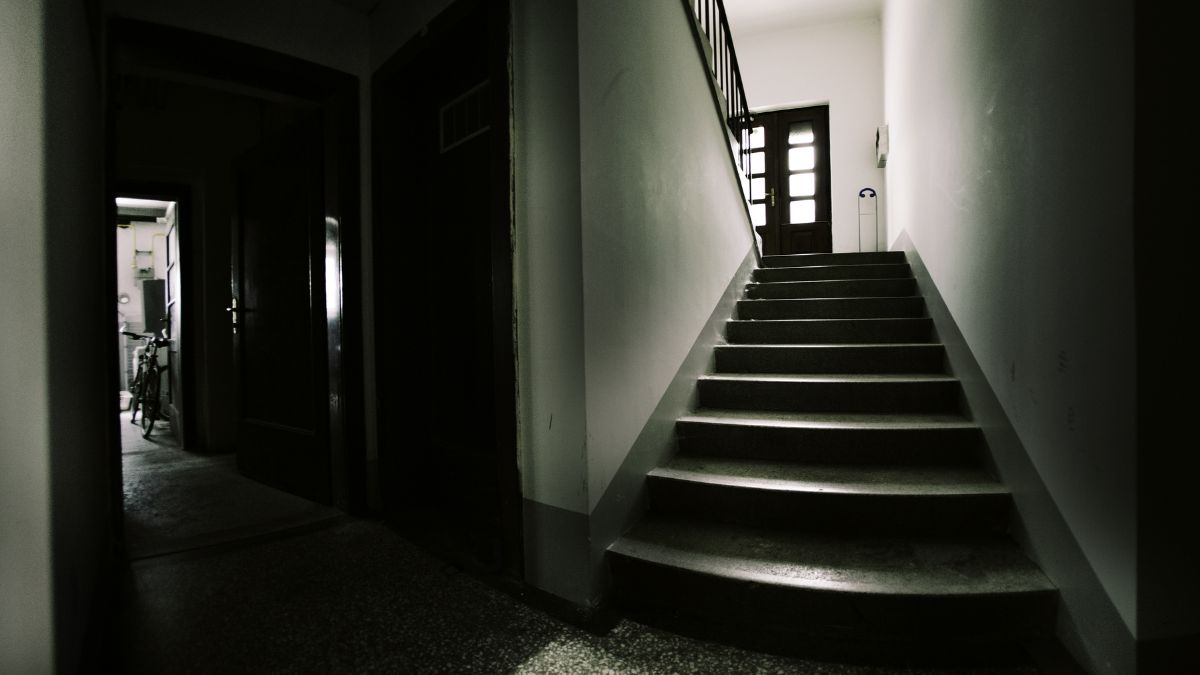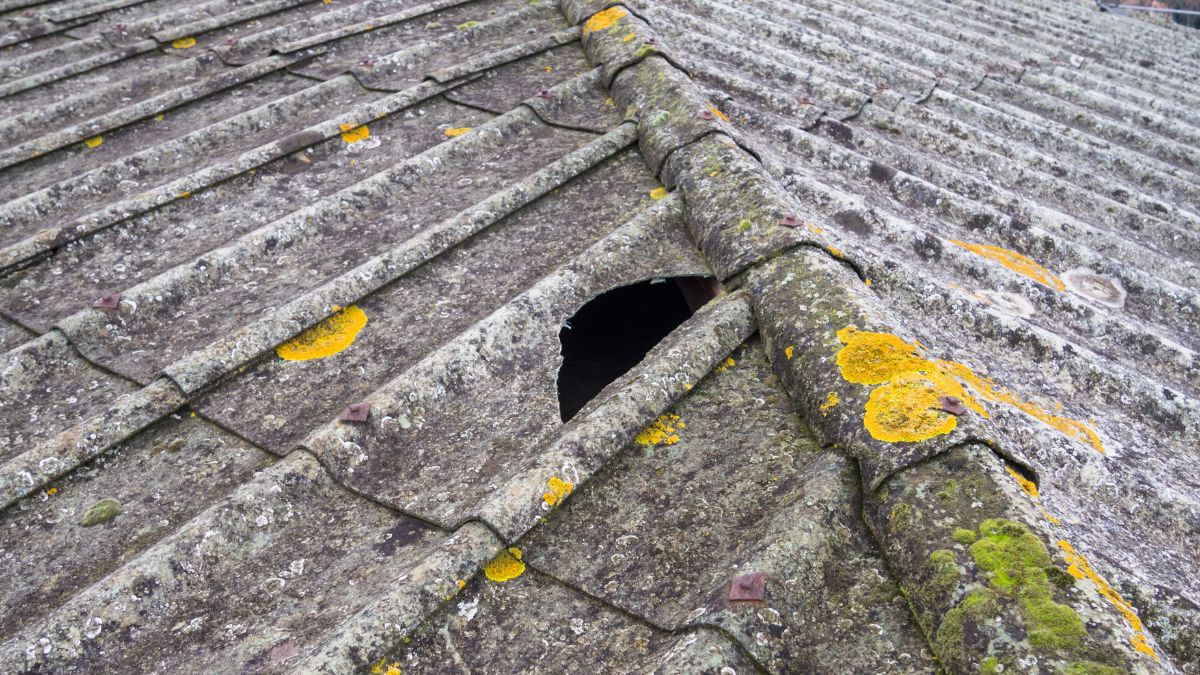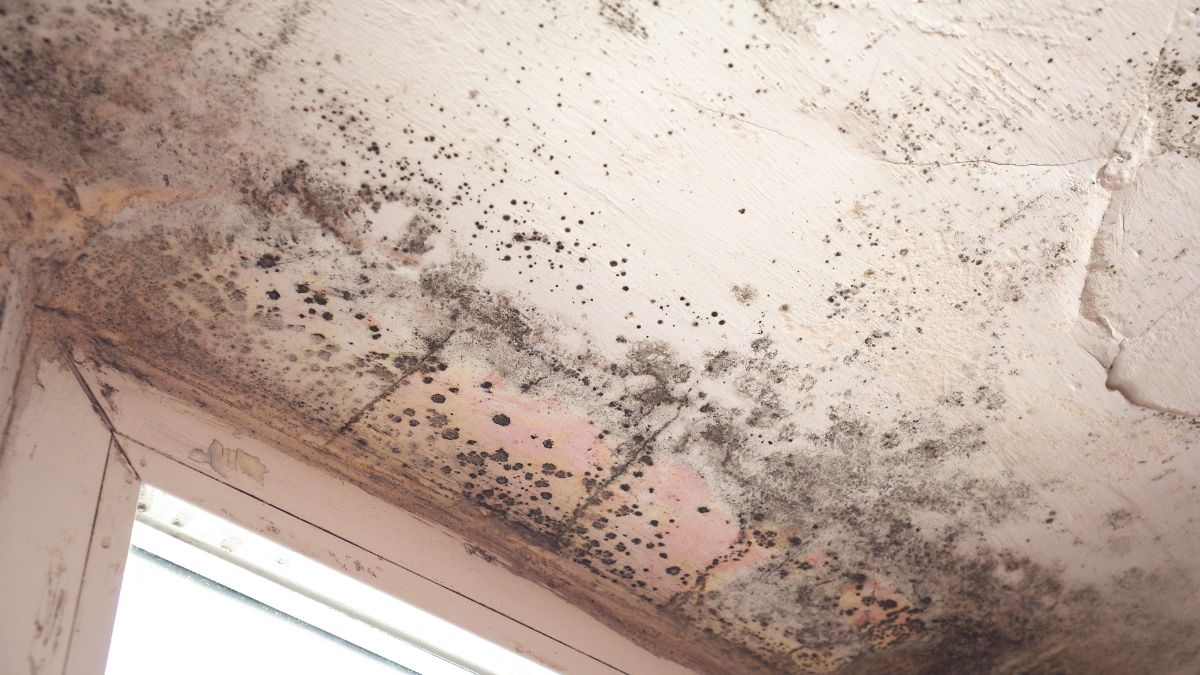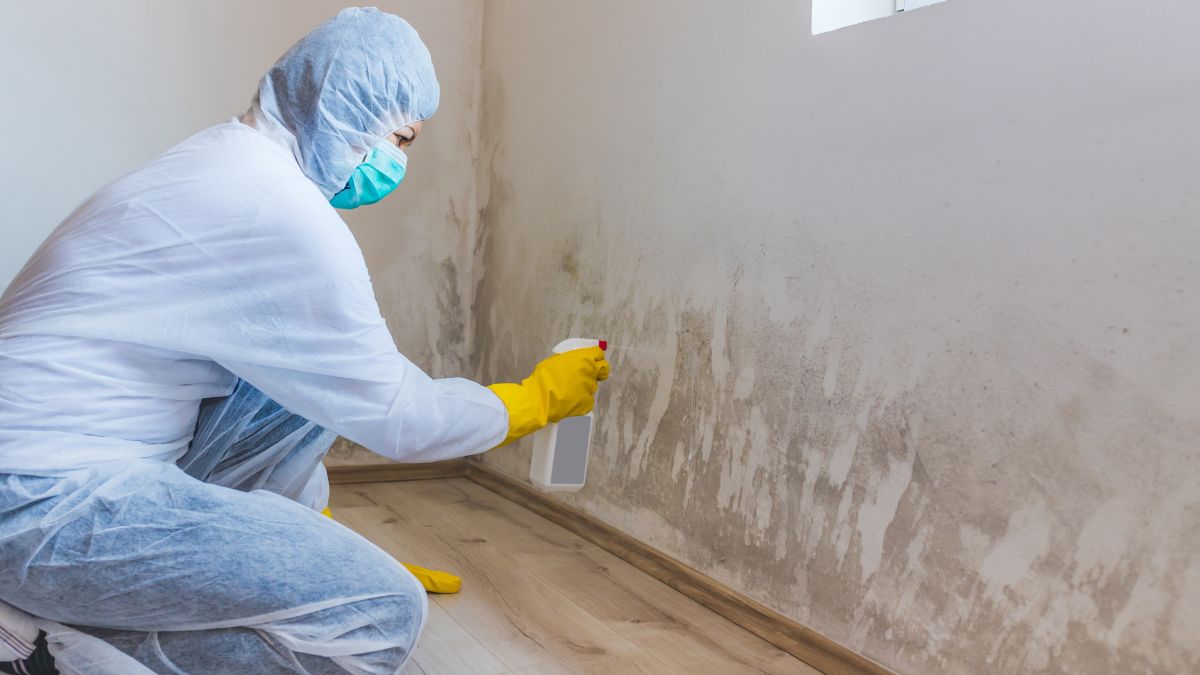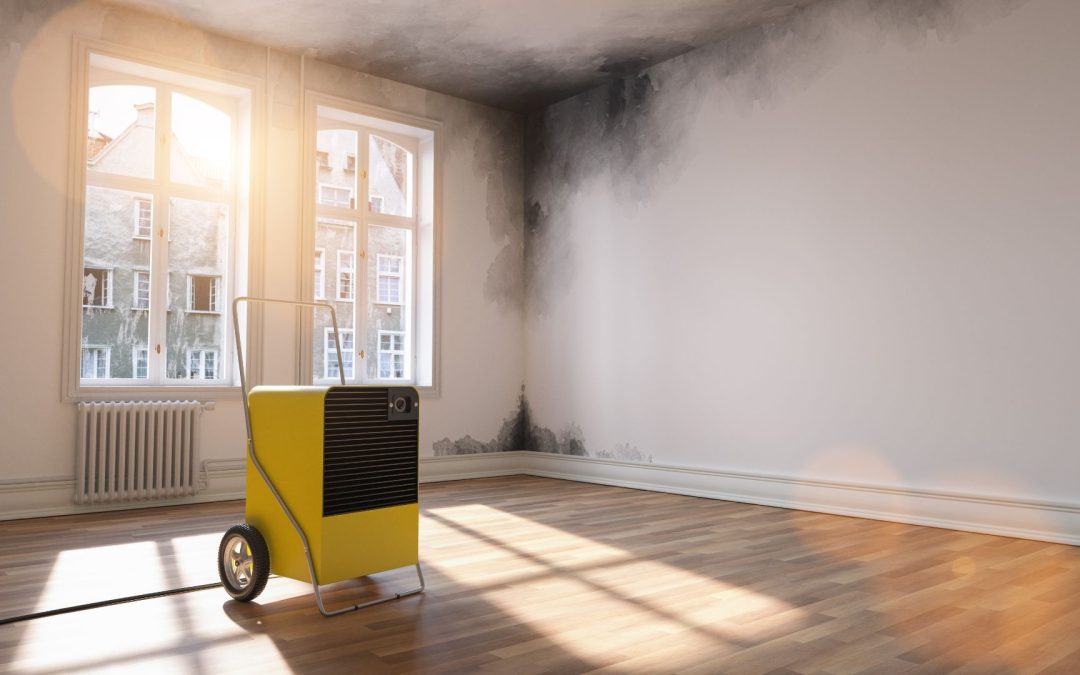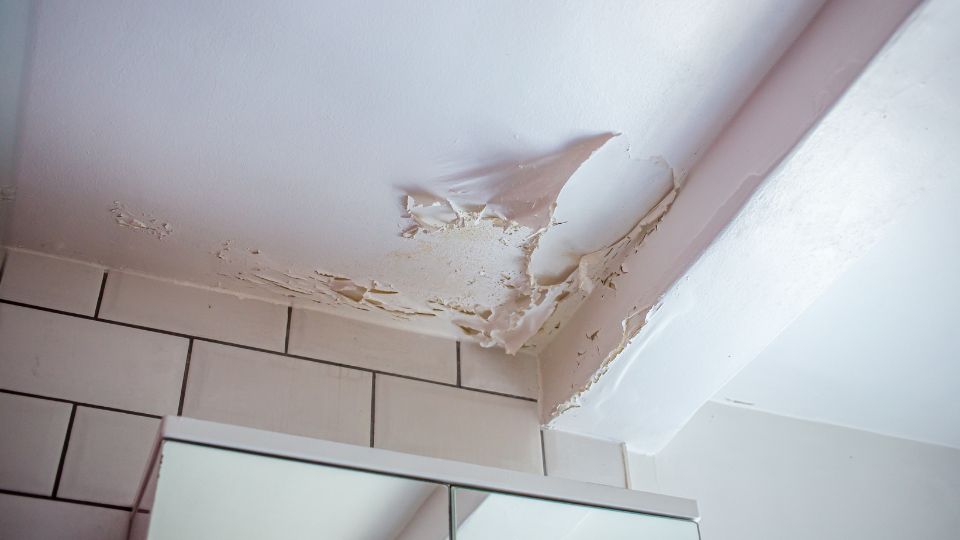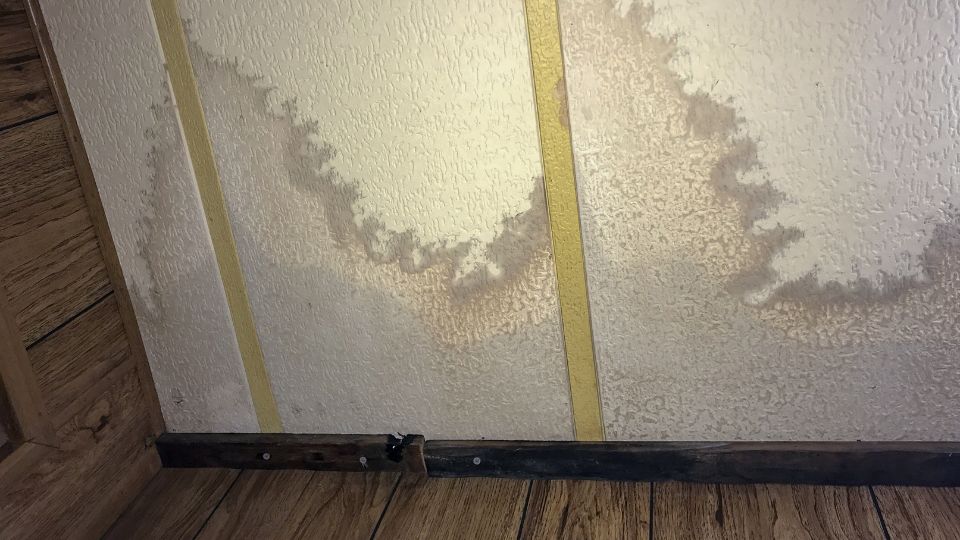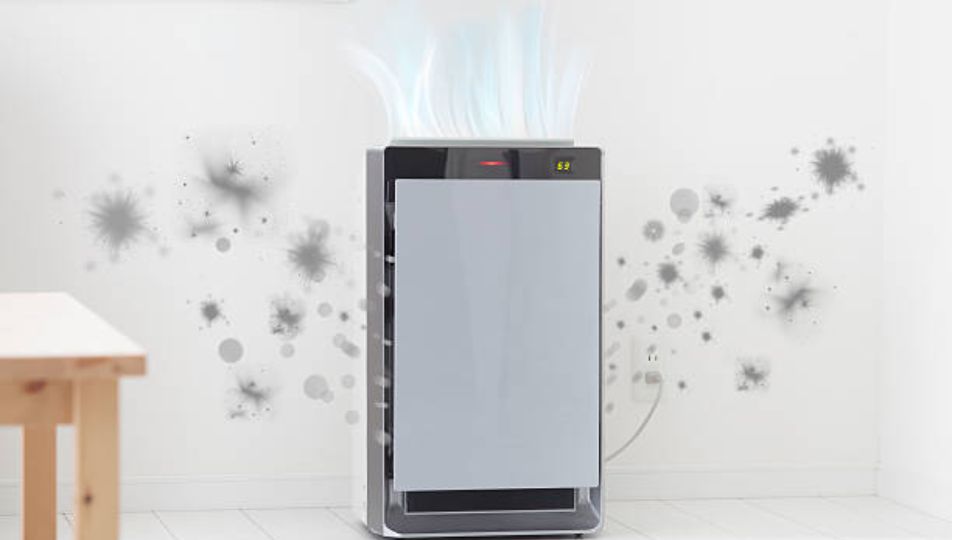
by Mold-B-Gone | Aug 17, 2023 | Mold and Depression, Mold and Infants, Mold Facts
The word “mold” is perceived to be in the same category as decay and rot. Objectively speaking, there are thousands of mold species out there. Some are helpful in that they help in the recycling of organic matter. That said, the majority that naturally occur in the home due to dampness or humidity have a negative effect on the body. Their spores produce mycotoxins that are absorbed through the intestines, lungs, or skin. Thus, mold can affect your heart and cause other health issues.
Respiratory Issues and Asthma
Mold may also cause chest pain and respiratory issues. If a person has asthma, mold exposure could worsen the situation and trigger an attack. They might also require an inhaler to manage the symptoms. Research has shown that higher levels of mold within homes could start cases of asthma in school-aged children.
Pneumonitis
Exposure to a significant amount of mold can trigger a severe reaction known as hypersensitivity pneumonitis. That leads to short- or long-term lung inflammation. Common symptoms are headache, cough, and muscle aches. These symptoms last a few days but can resolve if the exposure is eliminated.
Infections
Some people can breathe in mold spores without experiencing health complications. However, those who have respiratory vulnerabilities are at a higher risk of lung infection. These infections may include valley fever, sporotrichosis, histoplasmosis, and aspergillosis. You may be at a higher risk of getting these infections if you have sarcoidosis, cystic fibrosis, tuberculosis, asthma, or HIV.
Heart and Circulatory Issues
Mold can cause heart problems because of the presence of mycotoxins. Mycotoxins from black mold may be breathed in, ingested, or absorbed into the skin. When the exposure is prolonged, these toxins can enter the bloodstream, showing up as blood-related inflammations or infections. Mold can also cause heart palpitations, internal bleeding, heart inflammation, and blood clots. Seek immediate medical attention should you have any of these symptoms. They can quickly become severe, so treatment should be given right away.
Chronic Fatigue
When there is prolonged mold exposure, the immune system produces a sedative called chloral hydrate. It is a defense mechanism against mold in the circulatory system. Unfortunately, some of the negative consequences are chronic fatigue, muscle pain, drowsiness, and joint pain. It can be tricky to catch on to the cause of these symptoms. Once they become apparent, it would be advisable to seek medical help and mold removal assistance immediately afterward.
Treatment
Once you know the mold is causing health problems, consult your medical practitioner immediately. The source of the mold also has to be eliminated. That means hiring a professional remediation team so there is no further exposure to mold spores. It can be costly but ultimately worth it to make you and your family as safe as possible.
Fortunately, Mold-B-Gone specializes in mold removal in Atlanta. If you have any queries, give us a call. We will help sort out any cases of mold in your house or institution.

by Mold-B-Gone | Aug 10, 2023 | Health, Killing Mold, Mold Facts
Mold is a prevalent issue in many households. Given the right conditions, unfortunately, mold can spread to other areas of the home. Once the mold spores are carried to the rest of the residence, they begin to grow in places that have damp conditions. The trouble is that it’s not easily detected, so the problem may worsen before it becomes apparent. Mold can grow anywhere, provided the right conditions persist. So, a damp basement can affect the upstairs. You must be vigilant and solve the mold issue while it is still in the basement.
How Mold Travels Upstairs
Mold in the basement can affect the upstairs parts of the house via air ducts. Spores, microscopic seeds, are carried by air currents and can circulate to other areas of the house via the HVAC ducts. It also happens when warm air rises, so they are carried to the upper parts of the house. Spores can also attach themselves to clothing, skin, or shoes. Therefore, traffic in and out of the basement likely carries the spores to other parts of the house. These spores will germinate if they find suitable conditions in the different areas.
Safety Considerations When You Have Mold in the Basement
Considering how quickly mold can spread to other places in the house, you must know about the potential health implications. Mold may cause adverse reactions to people and their pets, including skin rashes, allergic reactions, or other respiratory issues. So, if there is mold in the basement, it would be advisable to have it removed immediately. Most people fear black mold because of the assumption it can cause cancer or likely kill. However, most species of mold are harmful to humans. Unchecked mold growth can also cause damage to the home, as it breaks down drywall and wood.
How to Remove Mold From Your Basement
Mold on basement walls must be preempted before it can spread to other areas of the house. Rather than doing the work yourself, call in mold removal specialists to deal with it. These professionals can identify and correct the source immediately. First, they assess the damage by checking all rooms in the house. Hopefully, if still limited to the basement, they will seal the cracks in the foundation and any holes. If only the mold is removed, but the moisture is ignored, there is a high likelihood it will come back.
Moldy walls, studs, plumbing, and floors are all treated. The HVAC air filters and ducts would have to be replaced and insulated to prevent any future growth. The mold removal specialists can advise on any further action depending on the situation.
Call in the Experts Right Away
Mold cleaning is about prevention, so begin by limiting moisture from the basement. If you have a mold problem and would like to arrange an inspection of your crawlspaces or basement, contact Mold-B-Gone, your mold specialists in Atlanta. Call us today for a consultation and quote.

by Mold-B-Gone | Jul 21, 2023 | Asbestos Removal
When it comes to protecting you and your family, understanding the different dangers in your home is of the utmost importance. That being said, two of the biggest culprits in today’s day and age are mold and asbestos.
Both of these materials can be harmful, if not deadly. But is asbestos mold? No, it’s different. However, understanding the differences between mold vs asbestos is important in protecting you and your loved ones.
Of course, if you see any of the signs or symptoms of mold or asbestos infestations, you should contact a mold removal company right away, such as Mold-B-Gone Remediation. Without further ado, let’s talk about the difference between mold and asbestos.
Asbestos Vs Mold: The Difference
What Is Mold?
Mold is a fungus, it is technically a living organism, this microscopic pest has spores that travel in the air incredibly easily.
Once a few spores of mold take root, they can begin to grow and spread rapidly. In fact, in as little as 48 hours, you can start to have a mold infestation. Signs of mold include black or green streaks for the most part, as well as a dingy smell.
Mold is present in attics, ceilings, bathtubs, and anywhere where moisture or dampness occurs. If left unchecked, mold can continue to grow. Mold can destroy wood, wallpaper, cabinetry, carpeting, and more.
It brings a variety of negatives to it. Not only does it smell and look unsightly, in addition, it can damage your property long-term, and it can even be harmful to your family’s lungs and respiratory system.
Mold is known to cause asthma, coughing, sneezing, and other symptoms. What’s more, there are various types of mold ranging from annoying to downright deadly.
What Is Asbestos?
Asbestos is similar to mold in that it occurs naturally, however it is not something that is organically in a home. It is created when manufacturing building materials. Asbestos is derived from minerals found in certain materials like brakes, vinyl floor tiles, and insulation.
Asbestos is not used as much as it was in the past. Still, if you have an older home or are importing materials that have not been properly evaluated, it could contain asbestos.
Black mold and asbestos both come with health risks. If it is inhaled, the tiny fibers can damage lungs, cause inflammation, and even cause cancer.
Get Mold Removal Today
At Mold-B-Gone Remediation, we pride ourselves on protecting your home, your family, and your belongings with mold removal in Atlanta.
After all, your home is a place of peace and should be your most prized possession. Let’s ensure that you can breathe clean, fresh air and avoid any kind of damage from infestations going forward. Give us a call for a free consultation today.

by Mold-B-Gone | Jul 11, 2023 | Mold Facts
When it comes to your home, there are several hazards that you need to be aware of. One major danger can be mold. In this article, we’ll talk about the answer to “Is mold in the attic dangerous?”
We’ll also discuss how you can ensure to get rid of any mold that might be in your attic or elsewhere in the home.
Where Does Attic Mold Come From?
Mold growth has several causes. Mold can be anywhere in the air because it’s microscopic. Spores can spread quickly. It can come from organic matter outside, such as leaves. From here, once it gets in your attic, it can be hard to get rid of.
Mold can grow on food, cardboard boxes, oxygen, and moisture. Essentially, any other organic materials can be a source of mold if kept too humid.
Most people aren’t in their attics all the time, therefore it may be difficult to get rid of mold before the visible and other noticeable signs start showing up.
In fact, mold can grow in as little as 48 hours. Causes for mold can be condensation, leaks, and poor ventilation.
For instance, if you haven’t replaced your roof and there’s a heavy rainstorm, mold can start growing in the next couple of days. Once mold gets going, it’s very difficult to get rid of. It can cause some major hazards.
Is Mold In The Attic Harmful?
Now let’s answer some common questions about this annoying fungus:
- Is black mold in my attic dangerous?
- Is white mold in the attic dangerous?
- Can attic mold make you sick?
Yes, crawlspace mold makes you sick — as does that found in the attic. But here are some other downsides:
Property Damage
Mold can be incredibly destructive to your property. Depending on the material of your attic, it can wreak havoc.
For instance, if you have a wooden attic, like many homes, the mold will degrade and decompose the wood. Eventually, this can create costly repairs.
That’s not to mention the smells that could arise from the area. Also, it’s very dangerous since the attic supports parts of your roof and other areas of the home. So to recap so far, the answer to “Is attic mold harmful?” is absolutely.
Airborne Illnesses
People who have asthma are at higher risk of being affected by mold. This is particularly true when it’s in your attic. Mold can also cause wheezing, coughing, sneezing, headaches, and other kinds of respiratory issues.
Time And Hassle
If mold grows in your attic, it could ruin the keepsakes that you store up there. It could also be incredibly time-consuming and costly to get rid of.
That’s why it’s important to consistently have a professional mold remediation team inspect the areas of your home. If any issues are found, experts can take care of them.
Get Mold Remediation Today
If you’re looking for the best mold removal company in Atlanta, contact Mold-B-Gone Remediation. We’ll identify the source of the mold, remove it, and ensure that you can get back to living your life without disruption and hazards.
Now you know that the answer to “Is black mold in the attic dangerous?” is yes, so don’t hesitate. Contact us for a consultation today with the best mold specialist in Atlanta.

by Mold-B-Gone | Jun 15, 2023 | Killing Mold, Mold Information
Mold removal mediation is one of the most important services you can have done on your home.
If you need any kind of mold remediation or mold removal, contact the experts at Mold-B-Gone Remediation today. Our technicians will ensure that all of the mold is removed from your property without damaging anything else on your property.
That being said, you may be wondering “Do you have to leave your house during mold remediation?” So let’s discuss that question once and for all. That way you can be as prepared as possible when it comes to making your home clean and safe again.
The Dangers Of Mold
Mold can cause several issues for you and your family. It can cause allergic reactions in you and your pets. It can create respiratory problems and make asthma symptoms worse.
It could even lead to death in the case of black mold, which can be toxic. That’s not to mention headaches, nausea, and other physical discomfort. Furthermore, mold can damage your property — It can completely ruin wallpaper, couches, and other materials.
Mold is truly a pain to get rid of once it grows, so you should always let the professionals handle any kind of mold remediation or removal.
On top of that, if you try to perform remediation yourself, you could end up damaging your property above and beyond where it’s simply infected with the mold.
This is one of the many reasons to hire mold remediation professionals. That being said, let’s talk about mold remediation and especially “Can you live in a house during mold remediation?”
Can I Stay In My Home During Mold Remediation?
If it’s possible, it’s best to leave the home for a few days while the remediation is taking place.
That lets the professionals work with more flexibility. It also can speed up the process since there may be chemicals used to clean up the mold, and that way you don’t have to worry about breathing any of it in for the several hours that it may still be in the air.
Get Mold Remediation Services Today
Contact the mold remediation experts in Atlanta for any kind of mold remediation or mold removal. We’ll diagnose what kind of mold you have and take the necessary steps to ensure that you and your family can breathe clean, fresh air as soon as possible.
It’s time that you feel comfortable and safe in your home once again. Trust the experts to help you remove the mold and answer any questions such as “Can you stay in your house during mold remediation?”

by Mold-B-Gone | May 23, 2023 | Killing Mold, Mold Removal
Mold is a common problem in several areas of the country. Yet, Atlanta’s humidity and heat mean that you may be more likely to suffer from this infestation. Let’s explore whether humidifiers are a viable solution to this pressing problem.
What Is A Dehumidifier?
A dehumidifier can help combat mold growth. Ultimately, dehumidifiers, as the name suggests, pull moisture from the air. This leads to a drier environment within the home.
So to answer the question, “Can a dehumidifier kill mold growth?” is yes and no. Indirectly, it prevents the habitat that mold loves to grow in. That being said, it won’t be enough to get rid of mold if it’s already taken hold. So you should always have professionals come out for mold removal in Atlanta.
How Does Mold Grow?
Aside from understanding “Will a dehumidifier kill mold”, and mites and fleas for that matter, let’s talk about the mechanism that allows mold to grow.
Mold loves moist, dark, damp environments. That’s why sinks, faucets, and other places in your home where there is water make an excellent mold habitat. Additionally, mold grows on paper, fabrics, cardboard, drywall, and paint.
And once it gets hold in your home, it can range from annoying to downright deadly.
How To Get Rid Of Mold
While you could try to install a dehumidifier and use some homemade methods, it’s best to have mold remediation done. Professional mold removal services kill the mold at its source so that it stops spreading.
After all, it’s very contagious, and once spores take hold, they tend to spread to other areas of your house — causing damage and health hazards.
Choosing A Mold Removal Company
When looking for the right removal services, ask them if they have insurance in place. Proper mold removal companies have insurance to guarantee their work for your protection.
Additionally, they should come out for inspection to properly assess the right method to use. And finally, look for a good online rating from other satisfied customers. This lets you know that you’re dealing with high integrity professionals with proven results.
Will Running A Dehumidifier Kill Mold? Summary
Contact Mold-B-Gone and get a free inspection. We’ll assess your property to see where mold is currently and potentially might be growing in the future. Then, we use state-of-the-art techniques and tools to remove the mold once and for all.
You deserve a clean, safe home. So reach out today and protect your property with expert guidance. After all, your house should be your refuge. And you shouldn’t have to ask questions like “Will a dehumidifier kill mold spores” ever again.

by Mold-B-Gone | May 9, 2023 | Killing Mold, Mold Facts, Mold Information
Bathrooms and kitchens are known for being places where mold grows. After all, there’s a lot of moisture in these areas. However, mold can also get into your room.
So if you’re sleeping in the same room as mold, you’re probably wondering, “Can you sleep in a room with mold in it in the first place?” After all, mold is known to cause some health problems, such as pneumonia, asthma, and other respiratory issues.
So let’s discuss what causes mold to grow and whether or not it’s safe to sleep in a room where it’s growing. And by the way, there is a difference between mold and general fungus. So read this article if you need clarification on these two topics.
What Is Mold?
Mold is microscopic spores that get into the air. These strains then attach to materials like cardboard, wood, wallpaper, and more.
Health Effects Of Mold
So what happens if you sleep with mold in your room in terms of health? And is it safe to sleep in a room with mold?
Well, you’ll be in for a lot of health issues unfortunately. Mold can cause allergic reactions, toxic effects, and irritations. While some mold is harmless, a lot of mold is deadly. If you breathe mold in for an extended period of time, it can cause infections, respiratory illnesses, and a poor immune system.
You should avoid sleeping with mold at all. It can compromise your sleep in addition to the hazards mentioned above. It can lead to poor sleep quality and REM, which means your body won’t recover or heal as well. So that being said, the answer to “Can you sleep in a mold bedroom” is no.
Signs That You Have Mold In Your Bedroom
Now that we know what happens if you sleep in a room with mold, let’s talk about how to detect it:
- Condensation on your windows
- A damp closet
- A musty odor
- A dark green or black area on your walls
If you notice any of these symptoms, call professional mold removal experts in Atlanta to come and inspect your bedroom right away.
How To Get Rid Of Mold In Your Bedroom
You deserve to sleep in peace for 8 to 9 hours a night. The last thing you want is mold in your bedroom, which causes health problems and sleep quality issues. So contact Mold-B-Gone right now if you want to improve your rest quality and eliminate airborne illnesses.
Also, we encourage ventilation in the meantime. Open your windows and get clean air flowing throughout your home, and use a dehumidifier. The less moisture that’s in the air, the less likely that mold spores can stick to your surfaces and grow.
Our experts will provide attention to detail when enacting the best solution and remediation to get mold out of your home.
Sleeping In A Room With Black Mold? You Don’t Have To
If you’re sleeping with mold in your room, our professional mold removal specialists can use thorough and powerful techniques to kill mold spores and keep them from spreading. Give us a call today, and bring peace of mind to your household.

by Mold-B-Gone | Apr 21, 2023 | Mold Facts
So imagine that you’re going to take a relaxing bath in your bathroom, but you start noticing a black spot on the ceiling in the bathroom. You may even notice a musty smell. Mold on the bathroom ceiling is no joke.
If you see any kind of dark green, brown, or black spots, then it’s likely that you have bathroom mold. This mold can spread quickly and cause severe damage to your home and to your health. So it’s important to remove this mold from the bathroom ceiling immediately by calling a professional service if you spot it.
That being said, it helps to understand why the mold is there in the first place. That way you can take preventative measures to keep it from happening the next time. So keep reading to learn why mold occurs and what you can do about it.
The Dangers Of Mold In Your Bathroom
Having mold on the bathroom ceiling above showers or other places is not a good sign. If you notice spores, mildew, or mold in your bathroom, it’s actually a very dangerous condition. Obviously, it can damage your wallpaper, tile, wood, and other materials. But more importantly than that, it can be very bad for your health.
Mold can get into your lungs. This can cause respiratory conditions like pneumonia. It can also worsen symptoms of conditions such as asthma. So if you have any pets, young children, or vulnerable people in your household, then you can’t afford to take any risks.
Additionally, mold can continue to spread. So if you see mold in the bathroom, it’s likely going to spread to other areas of the home and only get worse with time. If you don’t get it handled in the first couple of days, then it could get out of hand.
So that being said, what are some of the common symptoms that you might have mold in your home?
Symptoms Of Mold In The Bathroom
Dark Spots
If you notice green, black, or brown spots around the tile, bathroom, sink, or wallpaper, then you probably have mold. However, keep in mind that there’s more mold than you can see. There’s likely to be additional mold in the corners, under cabinets, and other moist or dark areas.
Musty Smell
Another main symptom of mold is a smell that reminds you of a dusty attic or damp basement. Normal household rooms shouldn’t smell like that, not even a bathroom. So if something smells off, then trust your instincts and call a professional mold removal company.
Peeling materials
If you have plaster or wallpaper that’s peeling, then that might not just be due to the water. Mold can get underneath the surface of these materials and break the adhesive structure. So this is a sign that it’s time to take action.
Mold Growing On Bathroom Ceiling? Here’s Why
There are some great ways to prevent mold in bathroom ceilings. Even worse, if it’s black mold, then this mold is even more dangerous. So you need to understand where it’s coming from so you can stop it.
Water Leaking From Roof
If you have a water leak coming from your roof, this creates the moisture that mold needs to thrive. This is one of the main reasons why you might have mold spores on your ceiling.
Not Enough Ventilation In The Bathroom
Try installing a bathroom fan or using it more if you haven’t already. Bathrooms are already moist places, so without ventilation, mold is likely to grow.
Lack Of Cleaning
You should be sanitizing your bathroom with cleaning chemicals and soap and water on at least a weekly basis. If not, the mold may not be washed away. Even just a small amount of water left behind from using the shower, sink, or restroom can give mold the environment that it needs to start populating.
Don’t Let Mold Take Over – Call the Pros Today!
There’s no time to waste if you notice mold in your bathroom. Instead of asking “why is there mold on my bathroom ceiling” the better question is how soon can a professional come out and remove it?
So call a mold removal service in Atlanta right now. At Mold-B-Gone, the experts are trained in the best ways to remove mold now and for good. That way you can enjoy a spotless home once again.
You won’t worry about spores in the air or damage to your home. Instead you can take a relaxing bath and spend your time how you really love to.

by Mold-B-Gone | Apr 11, 2023 | Mold Facts
If your house has experienced water damage, then there are a lot of issues that you might be facing right now. It can be time consuming and costly to repair siding, roofing, walls, appliances, and other items around your home.
However it can be even worse than that. If you don’t have a professional inspector at home for potential mold presence, then it can grow quite quickly after water damage occurs.
Mold loves damp, dark spots. So let’s talk about “how long does mold take to grow after water damage” and how to resolve the issue as soon as possible. That way you can restore your home to its natural beauty and avoid spending time and hassle dealing with this pesky fungus.
Why To Check For Mold After Water Damage
In this section, let’s talk about the dangers of house mold due to water damage and why it’s something that you shouldn’t play around with. There are several reasons that mold needs to be treated the second that you notice it.
Asthma and respiratory conditions
Mold mildew and fungi have spores. These spores get into the air. Once it circulates within the air inside your home, it can get into your lungs. If anyone in your family has asthma or another breathing condition, it can worsen their condition.
It can even cause severe illness or death. Even if you don’t already have some kind of allergies, it can still affect your respiratory system and cause pneumonia. This is one of the main reasons why mold should always be dealt with immediately.
Wall damage
From wallpaper to drywall to other types of materials, mold can be very damaging to your home. Ultimately, it rots and eats away at the materials in your home. This extends to carpets, wood floors, and other types of materials as well.
It’s much more costly to let mold run free than it is to fix it while it’s still small. The longer you wait, the more costly the repairs and replacements are going to be. So call Mold-B-Gone today and get mold removed if you notice any signs of it.
Mold can spread
While you may only notice mold in a small part of your home, like the garage or bathroom, that doesn’t mean it will stay there. Mold is incredibly infectious. It can spread very rapidly, especially if there’s water damage.
Mold thrives off of moist environments. So as long as there is water within your home, it has a means to reproduce and spread to the rest of your home. Like with many things, prevention is better than cure.
That being said, now that you understand the dangers of letting mold run its course, let’s talk about how long it takes for mold to actually form if you have water damage in a building.
How Long After Water Damage Does Mold Grow?
The mold colonies and microorganisms can grow rapidly. In fact, it doesn’t even take several days or weeks for it to grow. Many times mold can begin growing and germinating in the first 24 to 48 hours after water damage.
Mold colonies grow quickly with each passing hour due to the level of moisture. If you wait past the initial 48 hours, it becomes exponentially more difficult to get rid of the mold.
So the answer to “how long for mold to grow after water damage” is “really fast.” That’s why calling a professional mold removal service should be your first priority.
How To Remove And Prevent Mold?
If you notice a musty smell, moisture, cracking, peeling, or discoloration, then you probably have mold. If that’s the case, then there are a few things that you can do while you’re waiting for the experts to arrive.
Use a dehumidifier
This helps dry out porous surfaces where the mold likes to fester. Replace plaster and insulation. Porous materials should be replaced since they’re probably already compromised.
Remove water soaked items
Anything that’s been soaked or damaged with water should be removed and replaced in the home.
Scrub surfaces with disinfectant
Your tile, wood, and other surfaces should be scrubbed thoroughly to remove traces of the small spores.
Ventilate the area
Close the windows and put a fan on high. The more clean air that comes through, the less moist the area will be.
How Soon Does Mold Grow After Water Damage – Summary
If you feel like you might have mold or you do see clear signs of mold in your home, then take action. Reach out to Moldbgonega.com.
The mold removal company in Atlanta can inspect your home and take the necessary precautions to remove any signs of this dangerous fungi. You and your family deserve to breathe clean air and not worry about mold hazards or damage anymore.

by Mold-B-Gone | Mar 13, 2023 | Black Mold, Mold Facts
When it comes to mold, it is one of the biggest problems that homeowners face today. All types of mold can find its way into your home and stay around unnoticed. By the time you notice it, it probably means there’s much more mold hidden behind the scenes.
You might be wondering, do air purifiers help with mold? Well, in this article, let’s answer that question as well as talk about the importance of removing mold from your premises.
Do Air Purifiers Help With Mold?
You’ve probably heard a lot about these machines. So what’s the deal? Can air purifiers help with mold at all?
The answer to this question is yes, to an extent. However, like anything, they need to be properly maintained and cleaned. Even if you have an air purifier, mold can find its way into other areas of your house.
Mold is pretty sneaky, along with other facts about mold you might not know.
Do Air Purifiers Remove Mold? It Depends
Mold can get into your crawl space, your living room, your bathrooms, your ducts, and more. Keeping your home mold free certainly has a lot to do with reducing the humidity, but oftentimes it’s not enough.
Water damage, rain, leaks, and other things that you may not even be aware of can cause mold in your home. So therefore, the question of do air purifiers help with mold is difficult to give a straight answer to.
It’s sort of like asking if a band-aid can help a cut. Of course it can help, but depending on how deep the cut is, you may need an expert to take a look and help you further out.
A better question than “can a air purifier help with mold” is actually this:
“What is the best way to get rid of mold in my home?” And the answer to that is to hire professional mold removal experts in Atlanta.
That being said, here are the top reasons to consider mold removal services for your home.
The Benefits of Mold Removal Services
Identification
You may not be able to identify what kind of mold you have in your home. Mold ranges from benign and annoying to toxic and deadly.
Only expert mold removal specialists can tell you which one it is and properly clean your home to kill the mold and keep it from coming back.
Mold Is Difficult To Clean
You have to use the right chemicals, methods, and equipment to clean mold. Otherwise the spores will stick around and keep spreading.
Air Purification Is Not Enough
Air purifiers are excellent tools. However, they simply keep the spores from spreading around your home. If the spores are there in the first place, the mold has everything it needs to reproduce.
What’s The Best Air Purifier For Mold?
HEPA (High Efficiency Particulate Air) filters are effective for mold. They have high efficiency standards and capture over 99.9% of particles that are bigger than 0.3 microns.
Does A Hepa Filter Remove Mold?
This is a helpful type of purifier to have in your home. It can be a great starting point to reducing mold around your property. Your mold specialist can tell you more about it during your appointment.
Do Air Filters Help With Mold? – Final Conclusion
If you think you might have mold in your home, don’t hesitate any longer. It can cause health hazards and it almost never goes away on its own — even with air filters. Call the professionals at Mold-B-Gone today.
Let this expert mold removal service in Atlanta clear the mold from your home and ensure you and your family are breathing safe, fresh air.


